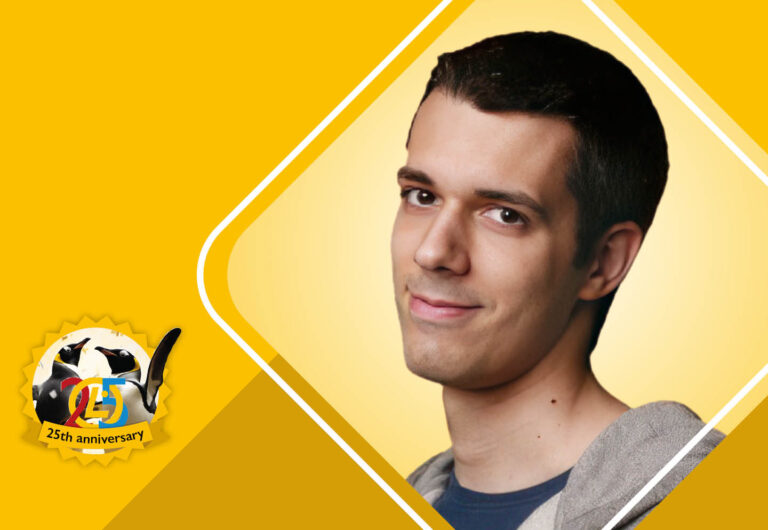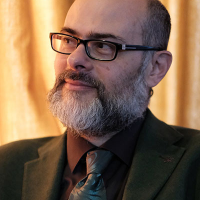Morrolinux: From LEGO to Linux

Celebrating 25 Years of Linux Excellence: A Conversation with Moreno “Morrolinux” Razzoli
As part of the LPI25 series, we’re thrilled to highlight inspiring stories from the Linux and open source community. Today, we sat down with Moreno Razzoli, better known as Morrolinux, whose passion for Linux and dedication to education have made him a prominent figure in the open-source world. From his first encounter with Linux to becoming an LPI Platinum Training Partner, Moreno shares his journey, insights, and vision for the future of open-source.
Where were you 25 years ago, when LPI began? If you prefer it in “before or after Linux” or ”Linux Age” style, LPI launched as the 2.2.13 Linux kernel was released on October 15, 1999 with support for IBM’s S/390 probably being the main feature.
Moreno: Twenty-five years ago, I was six years old, building my first creations with LEGO bricks. I didn’t have a rules set or instructions: just loose pieces that let me create whatever I imagined. In many ways, it reminds me of open source software. Both require creativity, patience, and the willingness to build something from scratch. Who knew those early experiences would prepare me for the world of Linux?
How old were you when you started working with Linux?
Moreno: I was 14 when I stumbled upon an Ubuntu 8.04 CD in a tech magazine. If I follow your “Linux Age” calculations, it was the period of 2.6.24. The first implementation of cgroups!
I was curious, so I gave it a try. At first I felt completely lost, but soon I was hooked. I remember the thrill of making the leap and reformatting my Windows partition to go all-in on Linux. I spent hours figuring things out, sometimes breaking my system and re-installing everything. It was a steep learning curve, but it taught me patience, problem solving, and, above all, a love for open source.
You’ve had an impressive journey since. What role did LPI play in your professional growth?
Moreno: The LPIC-1 certification was a game-changer for me. Before that, I was self-taught, learning through trial and error. The certification helped me formalize my knowledge, understand Linux at a deeper level, and apply those skills in real-world environments. As an LPI trainer and a Platinum Training Partner, I now have the privilege of sharing that knowledge with others. LPI has not only supported my career but also helped me inspire others to pursue open source.
You’ve been part of the Linux community for years. How has the landscape evolved, and what has been your role in it?
Moreno: Linux has come a long way since I first installed Ubuntu… Back then, setting up a microphone could feel like a monumental challenge. Today, the ecosystem is much more user-friendly and diverse. My role has always been about making Linux accessible to everyone. Through my YouTube channel and courses, I’ve focused on breaking down complex topics, showing how Linux can solve real-world problems, and dispelling myths about open source software.
One of my proudest moments was hearing from a viewer who said my courses helped him land his dream job in IT. Moments like that remind me why I do this.
You’re passionate about teaching. What advice would you give to newcomers exploring Linux for the first time?
Moreno: Start small. Linux can feel overwhelming at first, but the key is to take it step by step. Focus on learning the basics: navigating the command line, understanding file systems, and experimenting with basic scripting. The great thing about Linux is that every problem you solve teaches you something new.
Also, don’t be afraid to ask questions or seek help. The Linux community is one of the most supportive spaces out there. And if you’re serious about a career in IT, I highly recommend pursuing an LPI certification. It gives you a solid foundation and makes your skills stand out to employers.
Looking ahead, where do you see Linux and open-source in the next 5 to 25 years?
Moreno: In the next five years, I see Linux continuing to dominate fundamental areas of computing such as cloud computing, AI, and IoT. The flexibility and security of open source software make it the backbone of innovation in these fields.
In 25 years? That’s almost impossible to predict, but I imagine Linux will be even more integral to our lives. Think of how far we’ve come, sending an open source helicopter to Mars! By then, Linux might power technologies we can’t even imagine today.
As for me, I plan to keep exploring, teaching, and contributing to the open source community. The journey isn’t just about where we’re going but how we get there: together.
<< Read the previous post of this series | Read more LPI success stories here >>
